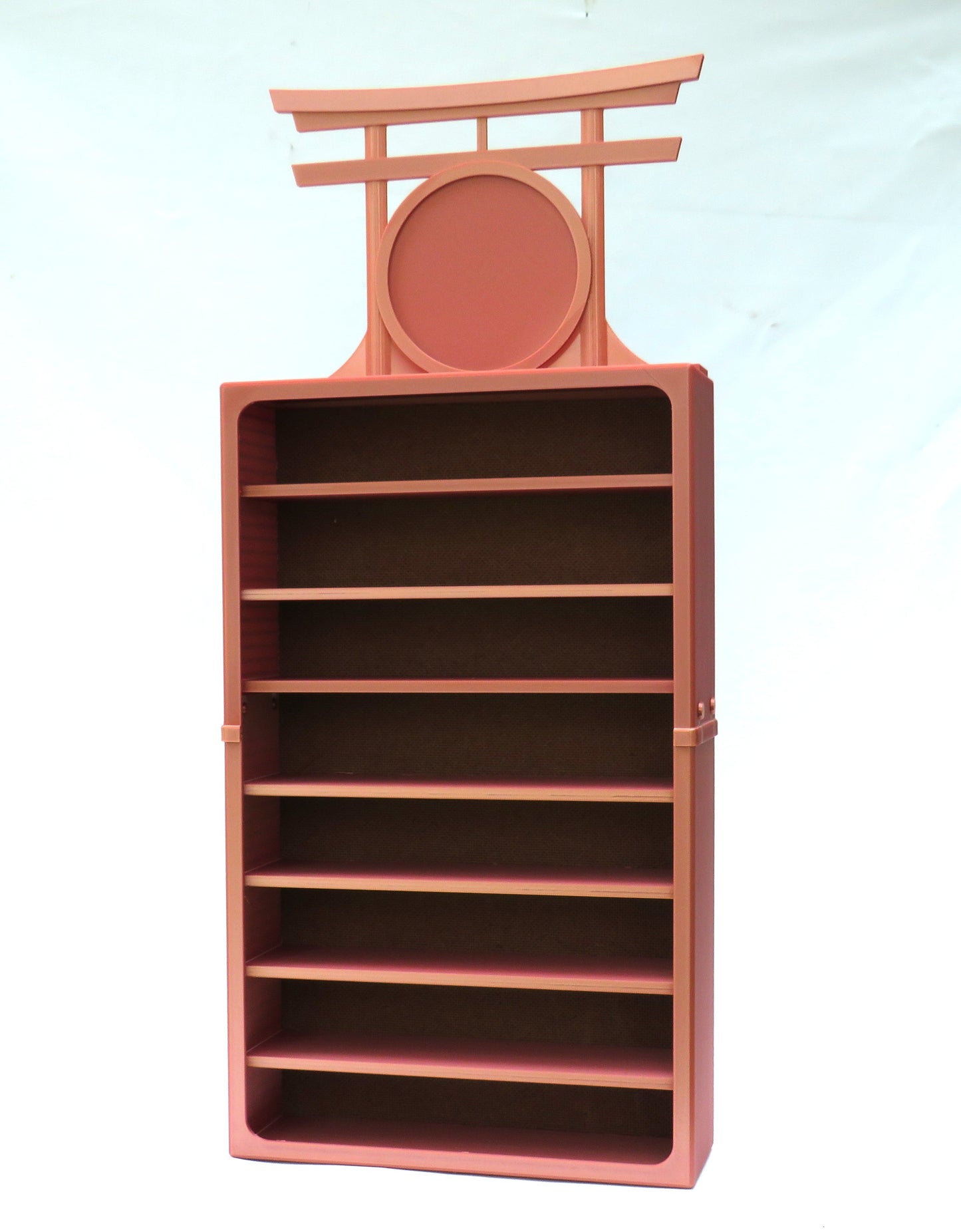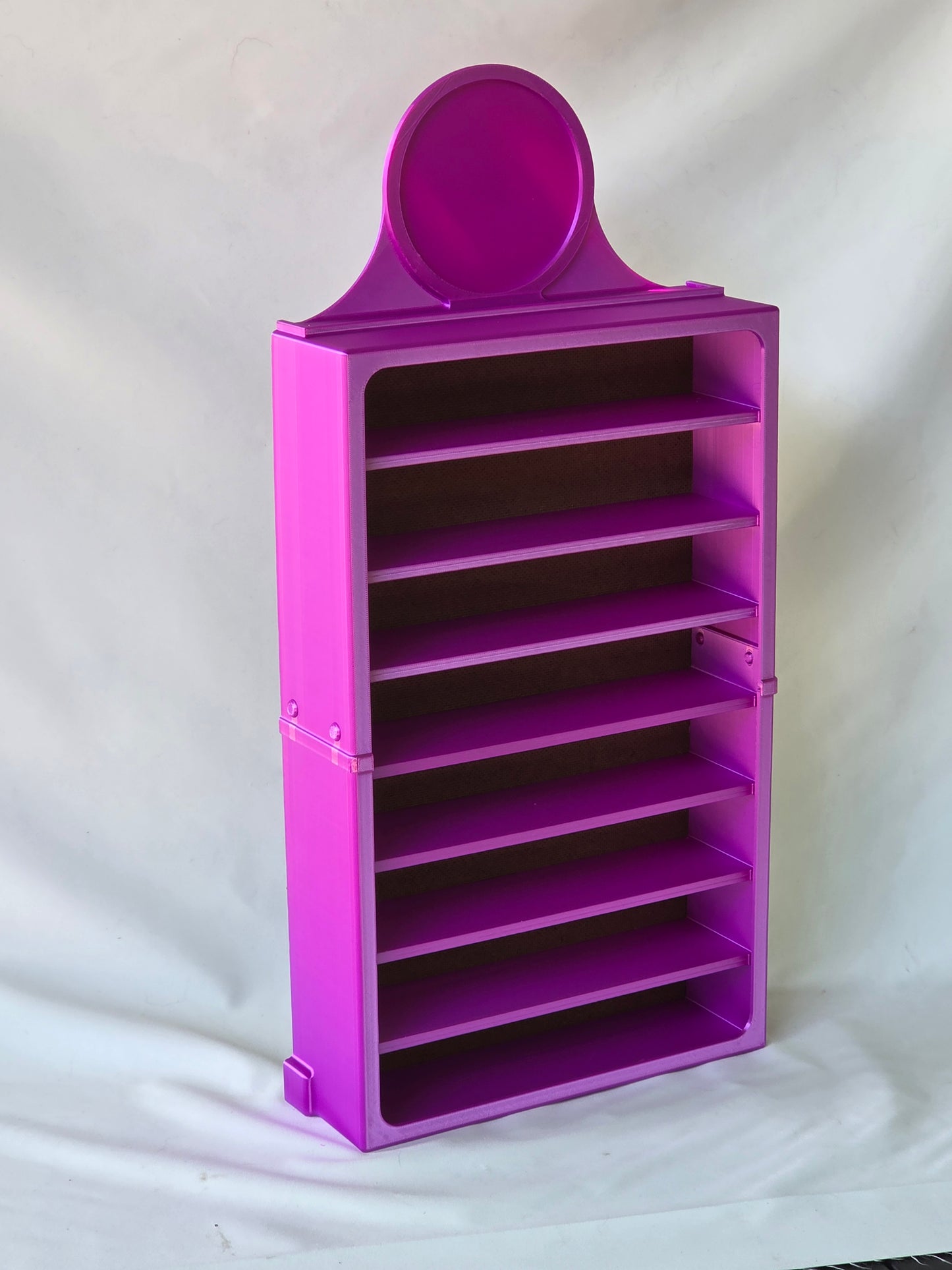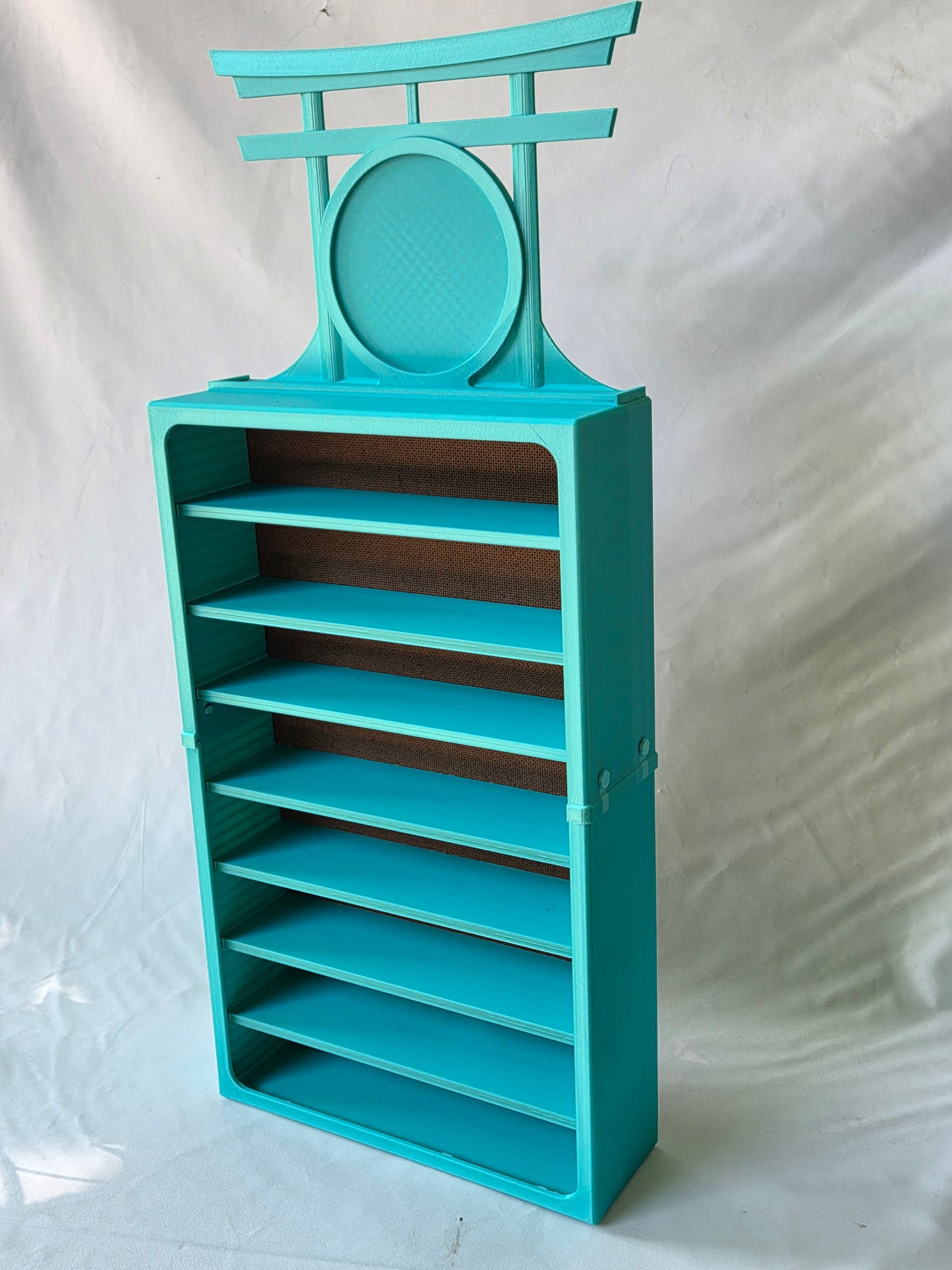8 Belt Display
8 Belt Display
This display nests 7 color belts and a black belt for organizations that uses the 8-belt ranking system. It contains 6 slots at 1-3/4 inches wide and 2 slots at 2 inches wide. Most red and black belts are 2 inches wide. A free top of your choice is included. (Upgrade topper is additional cost).
**6 Colors to choose from.
**If you need a different slot size, contact us at BeltDragon@outlook.com. We will be willing to meet your needs.
**Belt width can range from 1-1/2, 1-3/4, 2 or 2-1/2 inch.
**These are made to order. Please allow 3 days processing time. Please allow 5-10 days for shipping delivery.
**Hanging weight: 6# with belts.
Couldn't load pickup availability
50 in stock
View full details


Frequently Asked Questions
Cleaning Instructions
Follow these steps to keep from scratching the surface and maintain the shine and clarity:
1. Use a microfiber cloth and use soap and water or a plastic cleaner. Mild dish soap is gentle enough to clean without causing any harm. Warm water will help loosen any debris and dust. Make sure the cloth is damp, not dripping wet. Avoid using harsh chemicals or abrasive cleaners, such as Windex, as they can scratch or dull the polycarbonate.
2. Rinse the surface with a damp clean cloth using clean water to remove any remaining dirt, soap, or cleaning solution.
3. After rinsing, use a clean, dry soft cloth to dry the polycarbonate surface. Gently pat the surface dry, making sure to remove any excess water. Avoid using abrasive materials or rubbing too hard, as this can scratch or damage the surface.
Easy as 1-2-3 and your display will shine for years to come!
About Us
Beltdragon.com originated in the 1980’s when I was earning my colored belts. I noticed a lack of quality display cases. At that time the displays were made from hardwood which was very labor intensive. Beltdragon went dormant in the early 2000’s for personal reasons.
Now, in 2025, my son and I have resurrected Beltdragon using modern 3D technology to produce exciting displays with choices of colors and display tops. The displays are made of PLA plastic 3D printed to exact dimensions and stringent quality standards. All cases are completely enclosed to keep dust and dirt away from your hard-earned memories. We are proud and excited to bring our products back to market for the enjoyment of those who pursue the martial arts path.
The development of the colored belt grading system.
Dr. Jigoro Kano introduced the colored belt system to his teaching and awarded the first black belts in the 1880s. The Japanese martial artist known as the father of judo first created them to visibly measure his students’ progress. From there, Gichin Funakoshi, the founder of Shotokan Karate, and a friend of Kano’s, adapted the system for his own students.
The practice then began to spread to other martial arts. A black belt of Funakoshi’s named Byung Jick Ro would later bring the same system to Tae Kwon Do in the 1940s.
Another student of Kano’s, Mitsuyo Maeda, introduced his master’s use of white and blue belts to what would become Brazilian Jiu-Jitsu when he travelled to Brazil in 1907. BJJ’s current color structure developed later, and the discipline’s official ranking system was created in 1967. Students begin their martial arts voyage or a “new life” with a white belt.
The white belt symbolizes the birth of a seed, innocence or a fresh beginning.
What martial arts utilize a belt grading system?
Martial arts that employ a belt-ranking order include Karate, Judo, Taekwondo, Brazilian Jiu-Jitsu, Akido, capoeira, Krav Maga, savate, Kung Fu, and Wing Chun.
The ranks, colors, what they represent, and how long they take to earn are unique to each martial art.
In almost all types of martial arts, the first belt is white and you will progress until you reach black belt. Many martial arts believe the first black belt symbolizes the student has achieved mastery of the basics and a new path begins in learning advanced skills.
There is a belief that in ancient times students started their journey wearing a white belt and through time, discipline and hard work would eventually turn white to black. Through advanced practice the black belt will again return to white through wear and time with the goal of attaining “enlightenment.”Some say there is no evidence of this occurring. In my opinion this makes sense.
In ancient times, some regions deemed learning a martial art unlawful which forced “dances” to be created to secretly practice in the open without concern of retribution.
There are martial art systems that don’t use a belt rank system. The instructor presents his student with a “token” when the instructor feels the student has progressed to the next level.
*Belts not included*
Do not hang over bed.
May result in injury or death.


